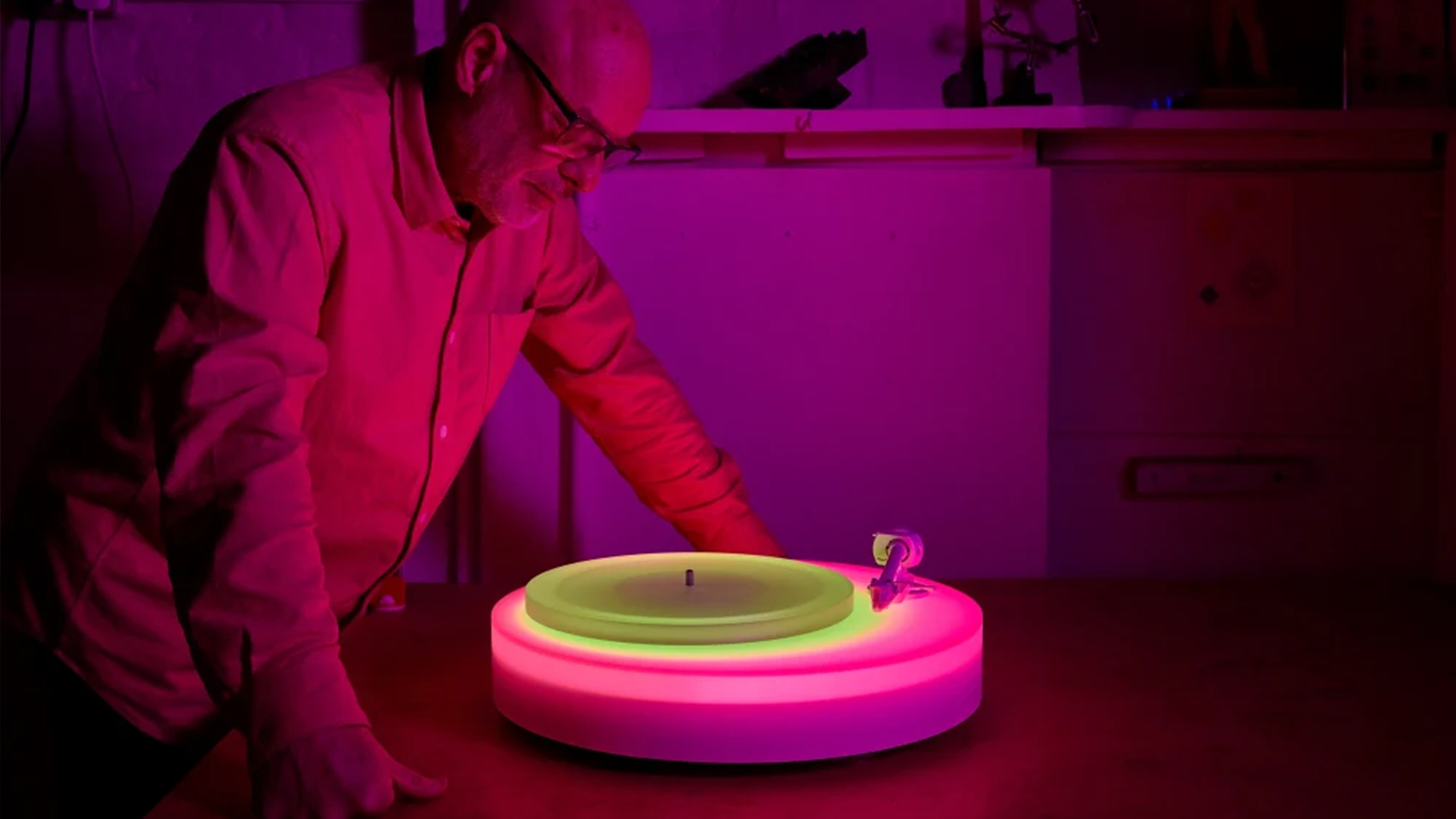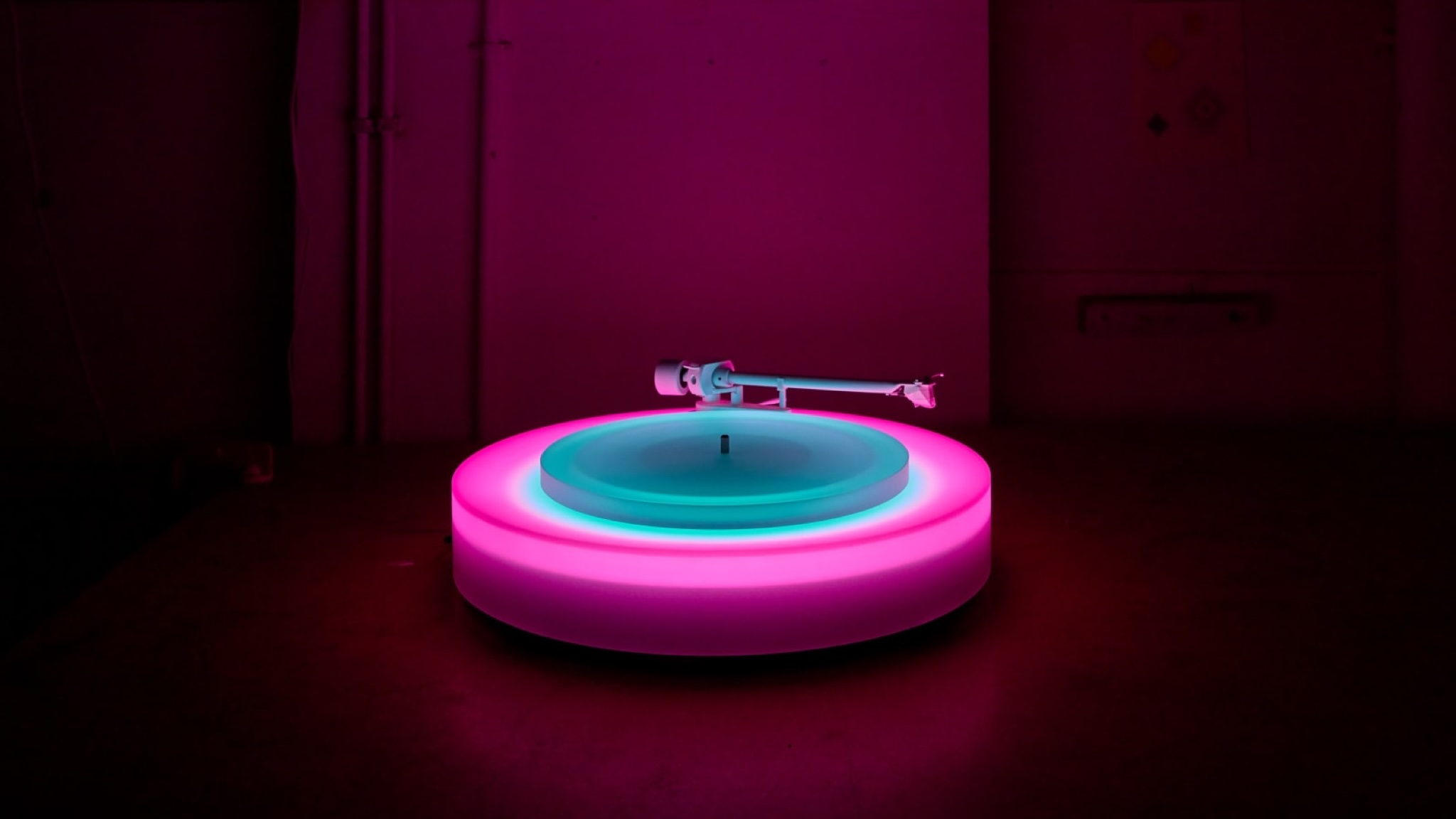
If the turntable pictured above looks strangely familiar, chances are you've seen a big version of it: Brian Eno's iconic record player was the inspiration for the stage set of U2 during their residency at The Sphere in Las Vegas.
The original Turntable is a design icon – we thought it looked seriously psychedelic when we first laid eyes on it in 2021 – and now there's a second version that's available in a strictly limited edition without Bono jumping around on top of it.
The Turntable II's platter and base are lit with LED lights that change as you play your records, but you'll have to be quick if you want one as there will just be 150 made available to the general public. Each one will have Brian Eno's signature and the turntable's number engraved on the side of the base.
The kicker? You'll have to part with £20,000 plus tax for the Turntable II, which is more expensive than a lot of the best turntables combined. There is, however, a cheaper way to get similar sound.
Brian Eno turntable II: key specifications

Some of the Turntable II specifications will seem familiar to you if you've recently used a record player, particularly if you know the Pro-Ject Debut Carbon as it uses a Pro-Ject aluminium tone arm, which is matched with an Ortofon White 2M cartridge.
The platter is acrylic, and the motor is a 15V belt drive with 33 and 45rpm speeds. The body is made from medium density resin, and the control board makes use of an Arduino to control the RGB LED lighting.
Of course, what you're buying here isn't a turntable but a piece of art. In addition to his recording and production work – which has included time in Roxy Music – pretty much inventing ambient music and producing bands such as U2, Eno has been working with visual art and light since the 1970s. His 2021 Turntable, and 2024's Turntable II, are part of that fascination.
According to Eno: "When it doesn’t have to do anything in particular, like play a record, it is a sculpture." And when it's in action, it's a generative artwork. "Several overlapping light cycles will keep producing different colour balances and blends - and different shadow formations that slowly evolve and never exactly repeat," Eno says. "The process is simple. The results are complex."
You can find out more about the Turntable II at Paulstolper.com.







